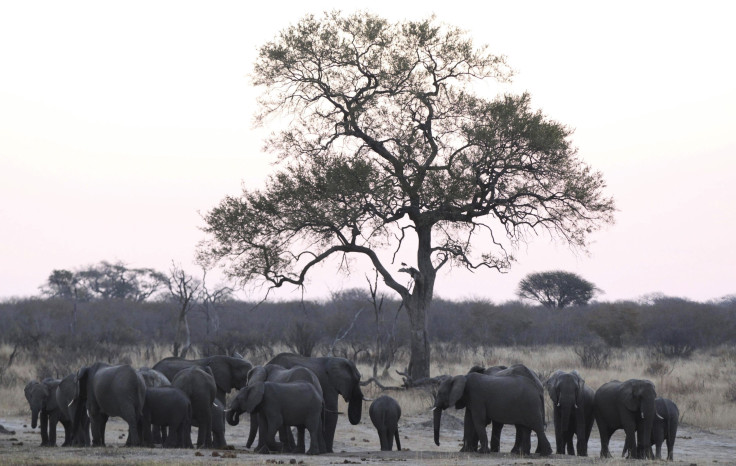Poachers Allegedly Poison 22 Elephants To Death In Zimbabwe; Authorities Recover Tusks, Carcasses

Poachers are believed to have poisoned at least 22 more elephants in Zimbabwe.
According to the parks and wildlife management authority spokeswoman Caroline Washaya, 22 elephant carcasses have been recovered in the Sinamatela area. In addition, 35 tusks have also been recovered, she said.
"Initial investigations indicate that there was cyanide poisoning,” Washaya told AFP. “We continue to lobby for deterrent penalties for people found with poisonous substances such as cyanide. We can't continue to lose wildlife at such a rate."
Two weeks back, 26 elephants were killed from poisoning outside Hwange National Park near Zimbabwe's border with Botswana. In various attacks, at least 14 elephants were poisoned to death in September.
More than 300 elephants were killed in 2014 as poachers were believed to have placed cyanide near the watering holes. Poachers target rhinos and elephants in game parks in Zimbabwe. Horns and tasks are smuggled to eastern Asian countries where there is a popular opinion that those animal parts, if consumed by humans, have certain health benefits.
Some people, not only in the Asian countries but also in the West, believe that rhino horns can be used as a sexual stimulant. In Vietnam, it is used as a cure for hangover and certain terminal illnesses, Save The Rhino reports.
Recently, the murder of Cecil the Lion by U.S. dentist Walter Palmer created huge controversy worldwide. However, Zimbabwe officials did not charge the U.S. doctor as he had obtained legal authorities to hunt, the BBC reported.
© Copyright IBTimes 2025. All rights reserved.





















